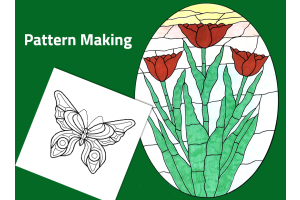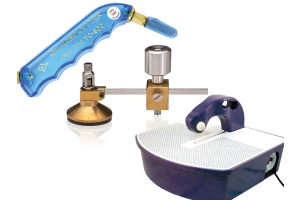We use cookies to make your experience better. To comply with the new e-Privacy directive, we need to ask for your consent to set the cookies. Learn more.
A Guide to Glass Cutting Tools for Artisans

A Guide to Glass Cutting Tools for Artisans
Unlock the secrets of precision and creativity in glass art with the right cutting tools. This comprehensive guide explores the essential tools that elevate your glass cutting game, ensuring a seamless and accurate process for your artistic endeavors.
The Versatility of Glass Cutting Tools:
From the classic precision of glass cutters to the controlled finesse of glass breaking pliers and the innovative capabilities of specialty cutting systems, each tool in your arsenal serves a distinct purpose. Glass cutters excel in delivering clean, straight lines, while breaking pliers provide controlled breaking for smooth edges. Specialty cutting systems, such as ring saws and band saws, open doors to intricate designs and unconventional cuts. Understanding the unique roles of these tools is the key to unlocking a world of possibilities, allowing artisans to achieve specific cuts and designs that breathe life into their glass creations.
Choosing the Perfect Glass Cutter:
Traditional hand-held cutters offer a classic approach, providing a steady hand for precise cuts. Oil-filled cutters, on the other hand, utilize lubrication to enhance smooth cutting motion, reducing friction and wear. Carbide wheel cutters, known for their durability and sharpness, make light work of various glass thicknesses. Wheel quality is very important. The right wheel is paramount for achieving precision in cuts. A well-crafted cutter wheel ensures clean, accurate lines, making it an indispensable element in the glass cutting toolkit.
Pros: Smooth operation, extended cutter life, and versatility for various glass thicknesses.
Cons: Messy application and additional maintenance for oil refilling.
Pros: Clean cutting, no oil refilling, and immediate inspection of the cut.
Cons: Increased friction and potential heat buildup during cutting.
Specialized Cutting Systems:
In the realm of intricate and unconventional glass cutting. These systems offer more precision, making them ideal for projects that demand detailed patterns and intricate designs. Additionally, their robust capabilities extend to handling thick glass sheets with ease, providing artists with the versatility needed to bring their creative visions to life. Whether navigating complex patterns or tackling substantial glass thickness, these cutting systems offer a tailored approach to meet specific project requirements.
Breaking Pliers and Running Pliers:
Breaking pliers provide precise control over where the glass will break, allowing artists to achieve clean breaks and smooth edges with accuracy. Running pliers, on the other hand, excel in guiding the glass along a score line, ensuring a controlled break. Techniques such as aligning the pliers with the scored line and applying even pressure contribute to the success of these tools in creating flawlessly broken and neatly edged glass pieces.
A circle cutter is a specialized tool designed to precisely cut circular shapes in glass sheets. It typically consists of a circular cutting head with a carbide wheel that scores the glass surface, and an adjustable arm or guide that allows the user to control the radius of the circle. By rotating the cutter around a central point, artists can achieve accurate and clean circular cuts in various sizes.
A glass grinder offers artisans the ability to refine and shape their glass pieces with precision. This tool is instrumental in smoothing rough edges, grinding away excess material, and adjusting shapes to meet exact specifications. Whether it's creating intricate details, achieving a perfect fit for mosaic projects, or refining the edges of fused glass pieces, the glass grinder serves as a versatile companion in the artist's toolkit. Its importance lies in providing the means to attain the exact shapes and finishes desired, ensuring a polished and professional outcome.
Innovations in Glass Cutting Technology:
Laser cutting and CNC glass cutting machines are reshaping the possibilities in the world of glass art by offering unprecedented precision and intricate detailing. Laser cutting allows for fine, detailed designs with minimal waste, while CNC glass cutting machines enable artists to execute complex patterns and shapes with automated accuracy.
Tips for Perfect Glass Cuts:
Master proper scoring techniques, ensuring a consistent and accurate starting point for your cuts. Adjusting pressure is crucial, especially when dealing with different glass thicknesses—gentle pressure for delicate glass and firmer pressure for thicker sheets. These nuanced adjustments empower artisans to tailor their approach to the specific characteristics of each glass type.














